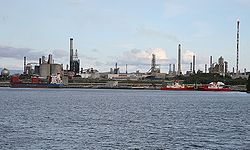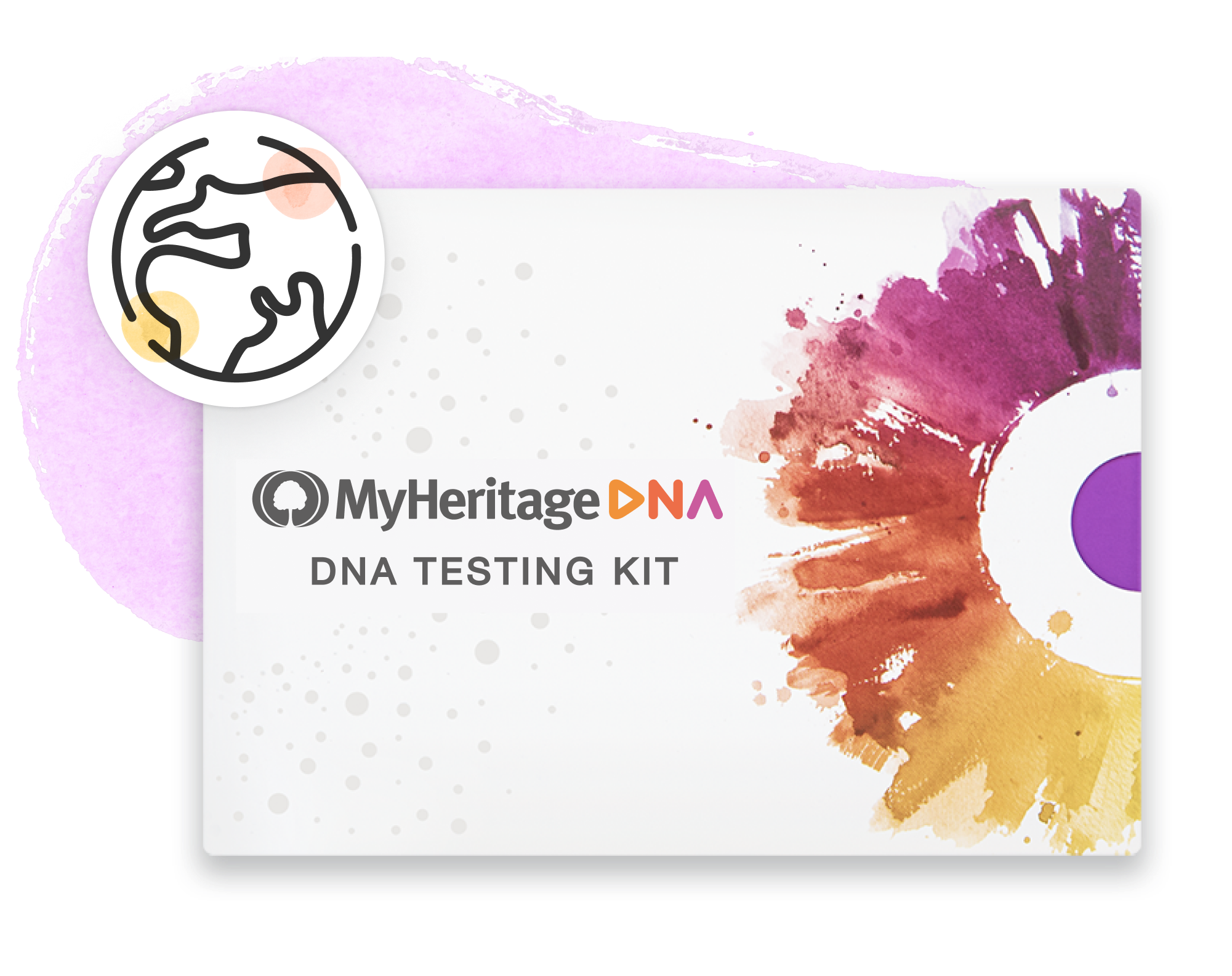Norwegian ethnicity concerns the ethnicity of the people of Norway in western Scandinavia and the Norwegian diaspora which is primarily concentrated in Iceland and the Midwestern United States in states like Minnesota, Wisconsin and the Dakotas. Sadly this Norwegian diaspora to North America resulted in more lives lost crossing the Atlantic Ocean in the nineteenth century than from any country other than Ireland.[1] Historically Norway was one of the most ethnically homogenous countries in Europe. This was owing to Scandinavia having generally witnessed little migration in the medieval or early modern periods. However, this situation changed in the aftermath of the Second World War as the discovery of large oil reserves off the shores of Norway in the North Sea made the country one of the wealthiest nations on earth, one which was comparatively underpopulated and needed foreign workers to arrive to expand the industrial and services economy. Consequently, Norway has seen an influx of migrants since the 1960s. These have come from very disparate parts of the world including Turkey, Poland, Pakistan, Sri Lanka, Syria, Chile, Vietnam, the Balkans, Iraq and Iran.[2]
Research your ancestors on MyHeritage
Norwegian history
There have been people living in Norway since 9000 BCE, a relatively late date for European settlement, but this is owing to the fact that the region was uninhabitable before the end of the last Ice Age. Archaeological evidence reveals that agriculture was practiced here since the fifth millennium BCE, but the country remained broadly unknown to the more advanced civilizations of the Mediterranean and Southern Europe throughout antiquity.
Norway’s real emergence into world history occurred during the second half of the eighth century CE as the Viking migrations and conquests began. Norwegian raiders sailed to Britain, Ireland, France and as far south as the Iberian Peninsula and even Morocco and the Mediterranean Sea. They were also primarily responsible for settling Iceland and the Norse explorations of Greenland, Newfoundland and the North American seaboard. The Icelandic settlers were subsequently responsible for producing the most advanced Norse literature of the Viking age in Iceland between the tenth and thirteenth centuries, such as the Poetic Edda.[3] Towards the later end of this period, King Haakon IV even emerged as one of Europe’s most powerful monarchs, ruling Norway and re-establishing Norwegian control over Iceland and Greenland, while even being offered the high kingship of Ireland.[4]
Unfortunately, Norway became sublimated to its more powerful Scandinavian neighbors from the late medieval period onwards. From the late fourteenth century, it formed part of the Union of Kalmar through which Sweden and Norway were ruled by the kings and queens of Denmark. Eventually, Sweden broke away to establish its independence in 1523, but Norway remained under Danish domination for centuries to come. When this link was finally broken in 1814 it was only for Norway to become a constituent part of the joint Swedish-Norwegian monarchy. This lasted until 1905 when Norway finally established its independence.[5]

Its long coastline, many ports and significant position in the North Sea ensured that Nazi Germany occupied the country in 1940, despite Norway’s neutrality, although Britain had considered doing the same before the Germans did so. In the aftermath of the Second World War Norway developed as one of the wealthiest countries in the world. This has been largely owing to the discovery of significant oil reserves in Norwegian waters in the North Sea. Because Norway’s own domestic energy needs have been met entirely for decades by hydroelectric power produced along the country’s rivers and fjords, nearly all of its oil is exported, making Norway for a time the world’s third-largest oil exporter. This has ensured that the Norwegian sovereign wealth fund is enormous, the country enjoys extensive wealth and has elected not to join the European Union.[6]
Norwegian culture

Norwegian culture is reflective of its geographical position dominating much of the North Sea and in medieval times the country was home to the production of many of the great Norse sagas, although even more of these have their origins amongst the largely Norwegian settler population in Viking Age Iceland. Norwegian cuisine has its own distinctive qualities. It is firmly rooted in Norway’s close relationship to the sea and dishes like Rakfisk, a kind of salted trout, are national dishes. Because Norway’s geography is not conducive towards arable farming, pastoral farming has been favored over the centuries, particularly the rearing of sheep and this has made dishes like smalahove, a traditional dish made from sheep’s head, and pinnekjott, made from lamb chops or ribs, quite central to Norwegian cookery.[7] Norway, it must be said, has not produced an immense number of figures who have impacted on movements like the Scientific Revolution of the seventeenth century or the Enlightenment of the eighteenth century, but in one respect, it is notable. The country was home to some of the leading artists and writers of the late nineteenth and early twentieth centuries. The two most noteworthy figures amongst these were Edvard Munch, one of the most paramount expressionist/symbolist painters of the turn of the century, and Henrik Ibsen, a major figure in the development of realist theater and drama in the late nineteenth century.[8]
Norwegian languages
There are several official languages and dialects in Norway today. While Norwegian is the main language, one which developed from North Germanic, there are two official written versions of Norwegian. These are known as Bokmål and Nynorsk. Bokmål developed owing to Norway’s historic connections with Denmark and has been influenced by Danish to a considerable extent. It is more prevalent in Oslo and the southern reaches of Norway where the North Sea gives way to the Baltic Sea as it flows through the Skaggerak. Nynorsk is a more exclusively Norwegian language that has been less influenced by outside forces.[9] Sámi, the language of the Uralic peoples of northern Scandinavia, is also a recognized official language of Norway today and is spoken by many people in the north of the country inside the Arctic Circle. But these official languages only tell half the story of the Norwegian lingual landscape. Norway is one of the most linguistically advanced countries on earth, with upwards of 90% of the population speaking English well as a second or third language, while tens of thousands of people speak languages such as Polish, Swedish, German, or Danish.[10]
Explore more about ethnicity estimates
- Norway Research with Online Records at MyHeritage and Beyond at Legacy Family Tree Webinars
- Norway - Historical Record Collection Catalog at MyHeritage
- Facebook Live: Introducing Major Collection of Historical Norway Church Records, 1815–1938 at MyHeritage Knowledge Base
- Researching Scandinavian Ancestors? It's Amazing What You Can Learn at Legacy Family Tree Webinars
- MyHeritage Adds High-Quality Images to the 1910 Norway Census Collection at MyHeritage Blog
References
- ↑ https://www.loc.gov/classroom-materials/immigration/scandinavian/the-norwegians/
- ↑ https://www.ssb.no/en/befolkning/artikler-og-publikasjoner/bosnians-the-integration-champions
- ↑ https://www.geni.com/people/H%C3%A5kon-IV-king-of-Norway/6000000000351087701
- ↑ https://www.newworldencyclopedia.org/entry/Haakon_IV_of_Norway
- ↑ https://www.royalcourt.no/seksjon.html?tid=28690
- ↑ https://www.lifeinnorway.net/norway-oil-history/
- ↑ https://www.atlasobscura.com/foods/rakfisk-norwegian-fermented-fish
- ↑ https://interlude.hk/edvard-munch-henrik-ibsen-edvard-grieg/
- ↑ https://www.lifeinnorway.net/languages-of-norway/
- ↑ https://higherlanguage.com/do-people-speak-english-in-norway/


